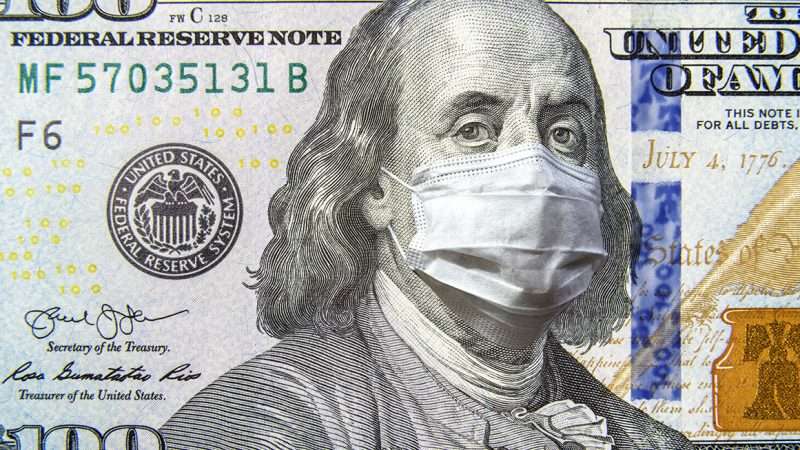
The $1.9 trillion COVID-19 relief plan that President Joe Biden outlined in a televised speech before his inauguration includes a national vaccine investment; $1,400 checks for individuals; more aid to small businesses, families, and schools; a bailout for state and local governments; and an increase to the federal minimum wage just as small businesses are trying to dig out from a recession. At press time, the fight over the exact details of the package was coming to a close. Although it is apt to be popular, this COVID-19 spending is neither necessary nor beneficial.
When the battle began over Biden’s plan, Donald Trump’s signature was barely dry on the $2.3 trillion bill that Congress passed in December, which included $900 billion in COVID “stimulus.” That legislation authorized $600 individual checks; a $300 bonus on top of an extension for federal unemployment benefits; a second round of bailouts for airlines, Amtrak, and the John F. Kennedy Center for the Performing Arts; the creation of two identity museums; and other items unrelated to the pandemic.
Even the ostensibly pandemic-related provisions of that bill reflected misplaced priorities. Although the best form of stimulus would be to reopen the economy, very little of the money went to vaccine distribution. We instead saw efforts by Sens. Josh Hawley (R–Mo.) and Bernie Sanders (I–Vt.), aided by Trump, to cut even larger checks to individuals. While they ultimately lost the fight for $2,000 checks, they secured means-tested $600 checks that individuals received regardless of their job situations.
In total, Congress has spent about $4.5 trillion on COVID-19 relief, of which $3.42 trillion was not covered by existing revenue. Assuming the new relief bill totals $1 trillion in additional spending, total stimulus spending over a one-year period will amount to 26 percent of GDP. From 2008 to 2012, the Bush stimulus, the Obama stimulus, and the Troubled Asset Relief Program combined accounted for around 10 percent of GDP.
The scale of the current relief efforts means that many Americans received more income during this pandemic than they did before it. According to data from the Federal Reserve Bank of St. Louis, total U.S. wage and salary disbursement was roughly $37 billion lower in November 2020 than it was in February 2020, which means the cumulative March-to-November wage and salary loss amounted to $333 billion. That’s significantly smaller than the amount of individual stimulus disbursed by Congress.
Meanwhile, analyses of the unemployment insurance extension enhanced by a $600 bonus that passed in March 2020 found that two-thirds of recipients made more by not working. Under the Biden proposal, new data show, 62 percent of unemployed workers receiving the benefit would make more than they did when they had jobs.
Sending checks to people while paying them not to work might be a winning issue during election season, but it will create serious distortions and perverse expectations that will be hard to correct. It is also economically destructive. Increased government borrowing to finance debt obligations does not just crowd out other federal spending priorities; it also competes for funds in the nation’s capital markets, which crowds out private investment. A review of the academic literature that my Mercatus Center colleague Jack Salmon and I conducted reveals that heightened levels of debt have a negative impact on economic growth potential, and in many cases this impact becomes noticeably more pronounced as debt levels increase.
There is no justification for sending hundreds of billions of dollars in checks to working families or for extending overly generous unemployment benefits when businesses are trying to reopen. There is also no justification for bailing out fiscally irresponsible states—especially those, such as California, that had larger revenues in 2020 than in 2019. And there is no justification for bailing out airlines’ shareholders or companies like Amtrak, which can’t seem to get its act together even during good times.
This amount of spending cannot be justified in the name of stimulating economic growth. Past spending sprees aimed at jump-starting the economy have always produced returns lower than the cost of the investment. When the nonpartisan Congressional Budget Office looked at the return on the March 2020 Coronavirus Aid, Relief, and Economic Security (CARES) Act, it found that the economy grew by 66 cents for each dollar spent. This dismal performance should not surprise anyone, as it is impossible to stimulate demand when so much of the economy is closed and people are social distancing.
from Latest – Reason.com https://ift.tt/3flREBi
via IFTTT